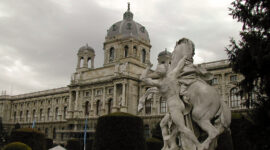Stop #33 (the final stop):
Lisbon sits on seven hills, and no matter where you go in Lisbon, you always feel like you are walking up one of them! To get a feel for the streets, take a look at the photos of the streetcars. I don’t know what they have for engines, but they must pack some serious power to navigate the hilly narrow streets.
The city is just north of the Rio Tejo (Tagus River) and has several distinct neighborhoods. We spent time in the following ones (and probably others but didn’t know what they were called):
- Alfama is the old Moorish quarter. It has some of the oldest buildings because it survived a major earthquake in 1755. This is where the Sé (the cathedral) and the Castelo de São Jorge (St. George’s Castle) are located.
- Baixa (Lower Town). The very large square, Praça do Comércio is one of Europe’s largest riverside squares— in the photos, is a yellow (perhaps ochre) and white large square building with a gigantic square and monuments. Baixa sits between this square and Praça Dom Pedro IV, a smaller square.
- Bairro Alto (Upper Neighborhood). We went to a bar and restaurant in this area, which is had hills (of course) and 18th-century streets with lots of bars and restaurants.
- Alcântara and Belém. The old port district. Belém is the Portuguese word for Bethlehem. It was from here that the country’s great explorers set out during the period of the discoveries. The Manueline buildings in this part of town make it obvious that they came home with many riches.
Highlights:
- Castelo de São Jorge (St. George’s Castle) was constructed by the Moors, but it refortified previous forts built by the Romans and Visigoths. Dom Afonso Henriques, mentioned in the Guimaraes portfolio, drive the Moors from Lisbon in. The views from the castle were some of the best in town.
- Elevador de Santa Justa. This is a tourist attraction built in 1902 by Raul Mésnier, who studied under Gustave Eiffel. You will see the steel tower in pictures below.
- This is another name for Lisbon’s main square described above. It is the same as the Praça Dom Pedro IV. There are ornate sculptures/statues throughout the square.
- Torre de Belém. The building shown with a reflection in my photos below including balconies and turrets is Belém completed in 1520 to defend the port entrance. It is dedicated to St. Vincent, the patron saint of Lisbon.
- Padrão dos Descobrimentos. The white Monument of the Discoveries in photos below was made in 1960 to commemorate the 500th anniversary of the death of Prince Henry the Navigator. From this site, Vasco da Gama left for India. Prince Henry is first figure on the monument, nearest to the water. Behind him are the Portuguese explorers of Brazil and Asia.



































































































































































